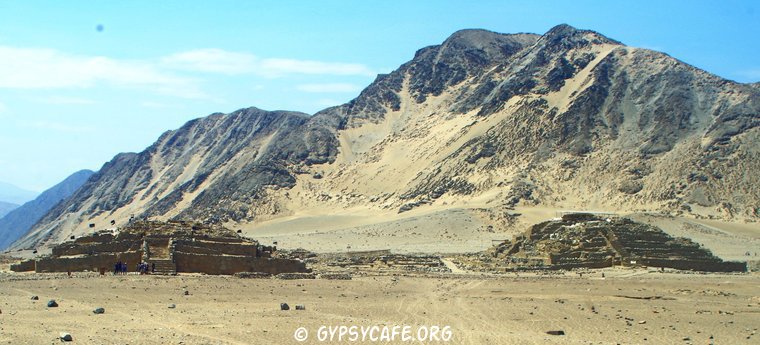
Two hundred kilometres north of Lima lies the recently discovered remnants of one of the most ancient centres of a civilisation yet to be unearthed in modern times. The Caral civilisation is the oldest know of civilisation in the Americas and one of the oldest in the world. It was a Pre-Caramic civilisation and it is believed that the Quecha language originated there. Caral covers approximately 60 hectares (with most of it still unexcavated) and is estimated to have had around 3000 inhabitants in its heyday.
Caral was fist discovered in 1905 by German archaeologist Max Uhle. The excavations were not dated properly at the time and archaeologists assumed that the uncovered structures were built by a recent Andean civilisation. However, Ruth Shady, a Peruvian archaeologist, visited Caral in 1994 and immediately realized that Caral was potentially much older.
Results of subsequent carbon dating proved that (astonishingly) some artefacts from Caral were no less than 4600 years old. To put this into perspective, Caral was built 4000 years before the Incas built Machu Picchu, which was founded in 1450. At Caral’s ancient astronomical observatory there are geoglyphs which were created 3300 years before the famous Nazca Lines in southern Peru. Equally, Caral is as much as 3300 years older than some of the Maya cities in Mesoamerica.
The centre of Caral was built upon a desert platform providing protection from natural disasters while being situated adjacent to a fertile valley providing access to agricultural land and water. Caral’s significance is important in a modern context for various reasons:
No traces of warfare or weapons have been found since excavations began, pointing to a peaceful civilisation that apparently did not sense the need to protect itself from potential invaders. Gender equality appears to have been a feature of Caral with men and women both enjoying high status. Caral featured sophisticated sustainable urban planning and boasted intricate and extensive irrigation systems indicating an advanced form of ancient sustainable development.
Caral was a mother civilisation which means that it provided the foundation for the formation of later civilisations. It developed at the same time as the Old World civilisations in Egypt, India, Mesopotamia and China, but developed in almost complete isolation. The ancient city of Caral literally remained lost for centuries and it is speculated that the city was deliberately buried to preserve it when its inhabitants realised that their civilisation was collapsing.
Today it can be observed that Caral contained monumental buildings, sunken plazas, collective assembly spaces and hierarchical residential units. Some buildings were used for sacred rituals or private rites while buildings had symbolic meaning and ancestral relevance. Astronomy, time-keeping, accounting and mathematics were practised in Caral. The city’s infrastructure design also featured seismic resilience and underground air ducts which fuelled fires for heating and cooking.
The first tourists apparently only started visiting Caral around 2013. It is therefore in many ways still a relatively undiscovered site and is off-the-beaten-track, even by Peruvian standards.
By J.J. Montagnier
(All photographs taken on 17 March 2019)
**
Recommended excursion:
Peru Ministry of Culture – Caral Educational Excursions Program
Recommended further reading:
First City in the New World?
Sacred City of Caral
The Road to Caral Slideshow


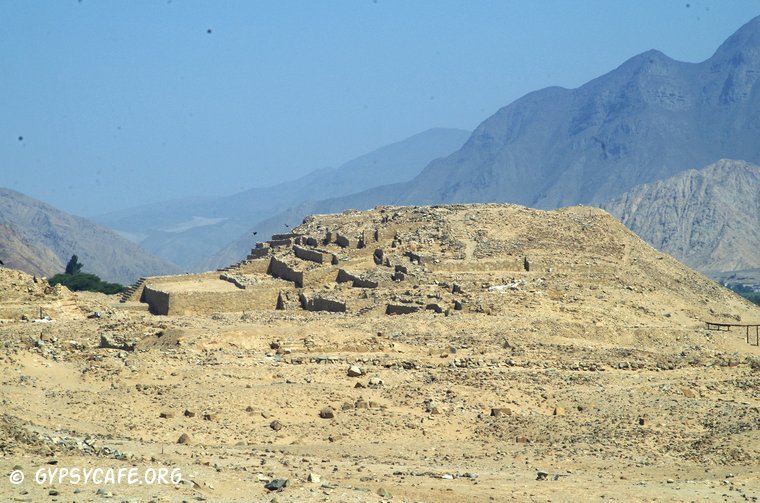

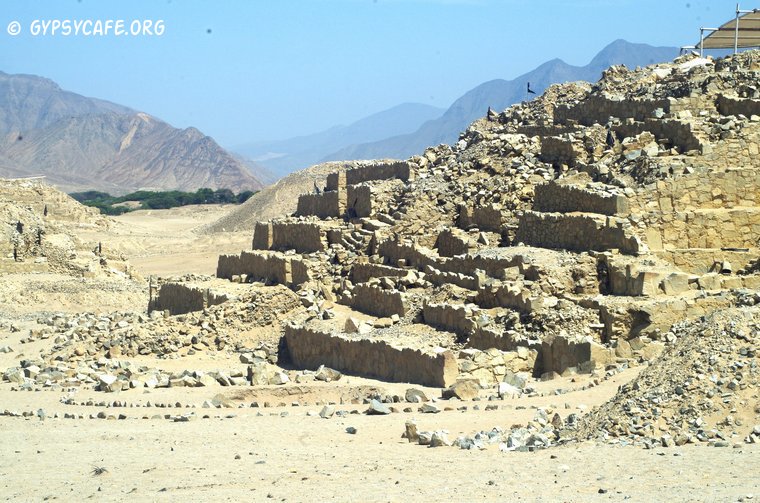
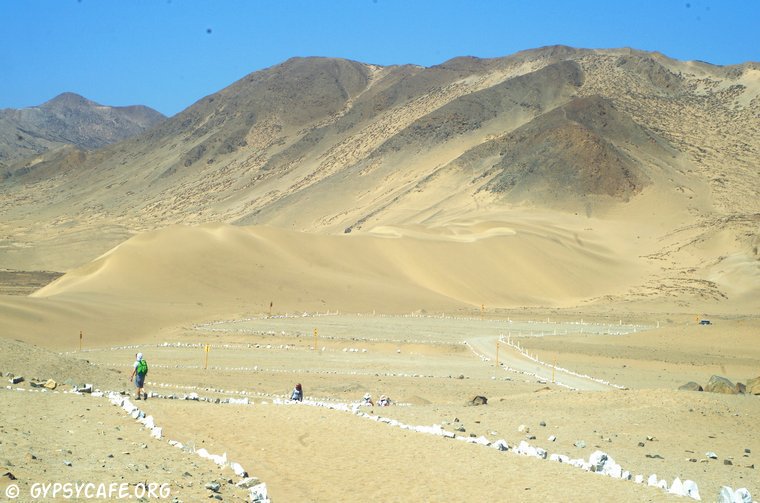
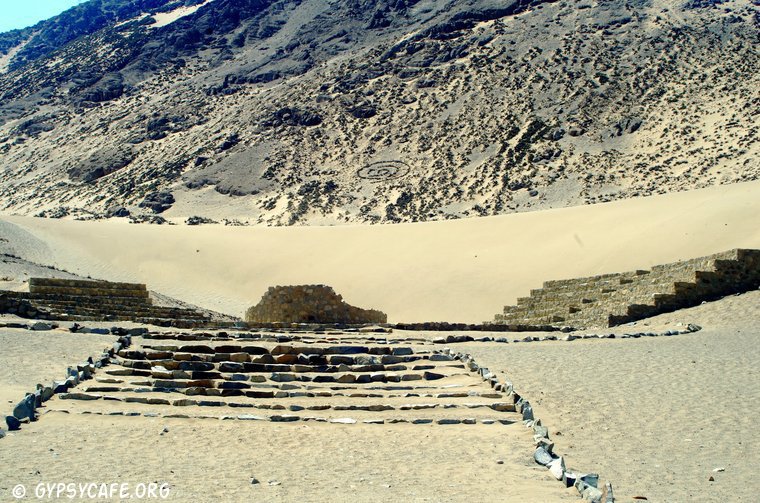
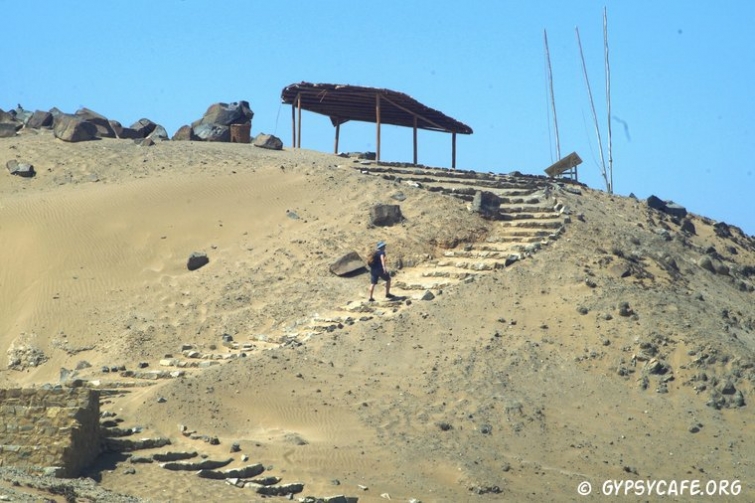
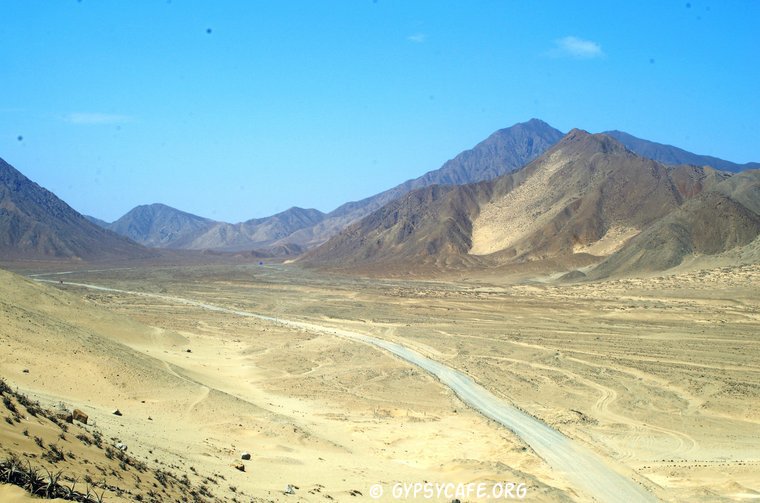


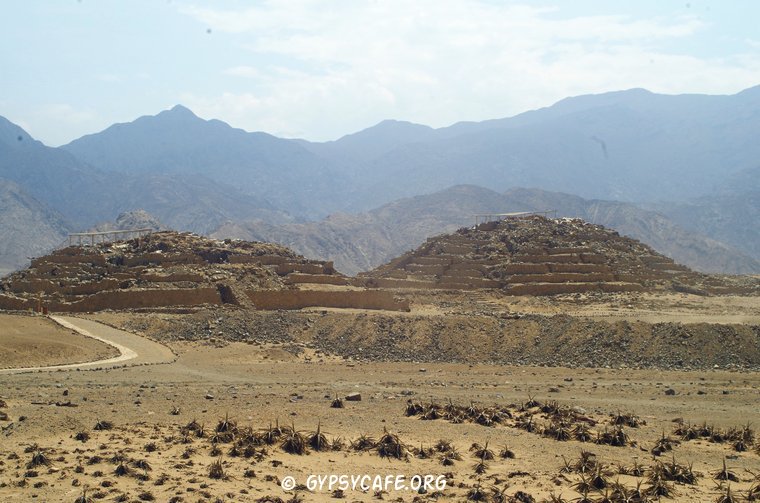
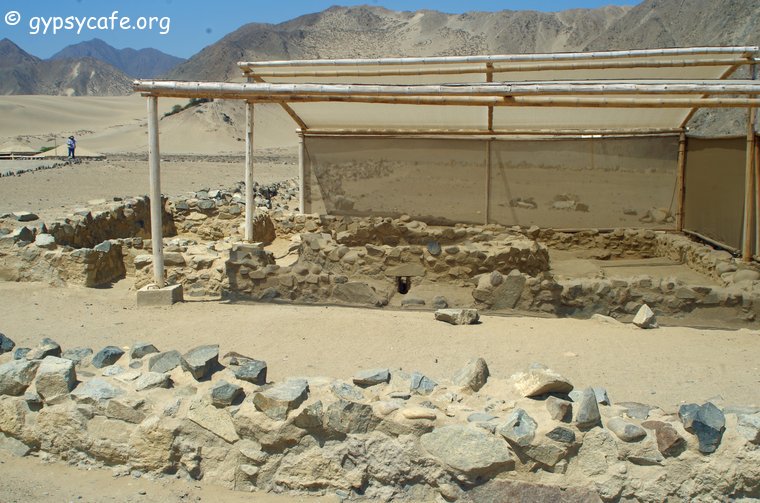




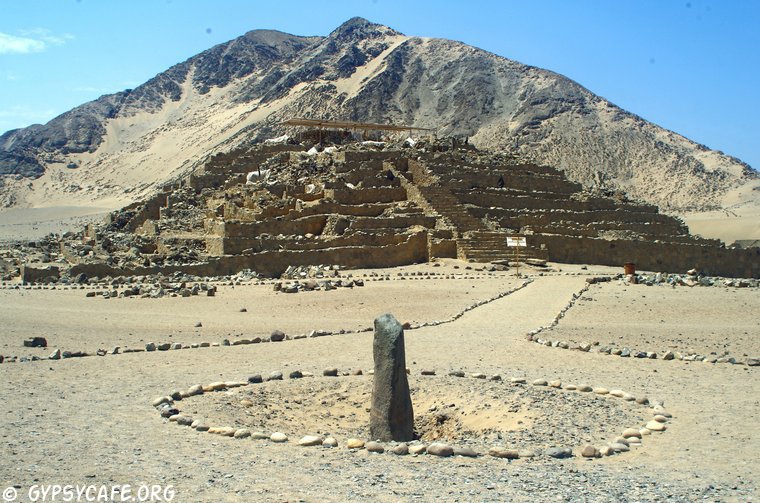

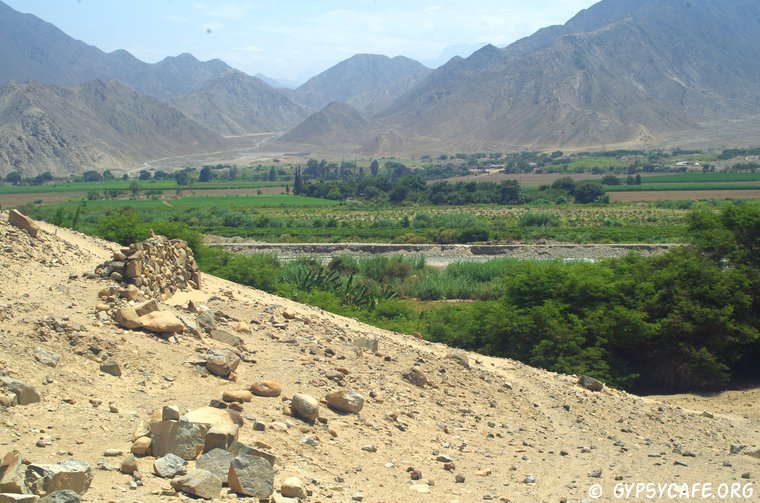
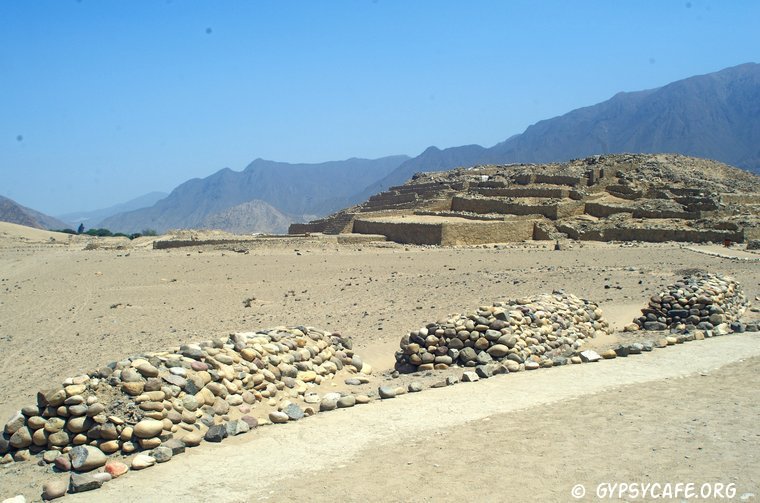
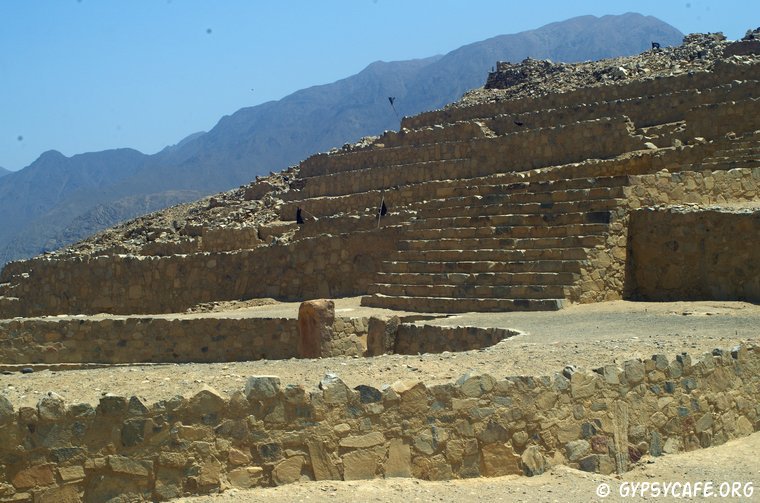
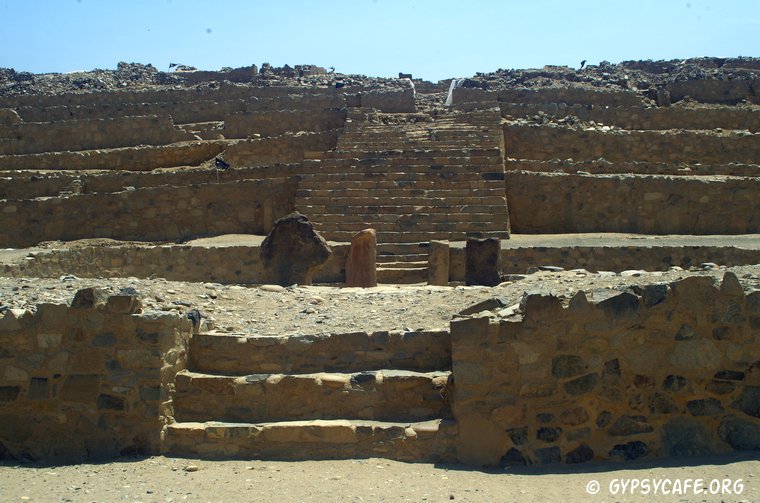
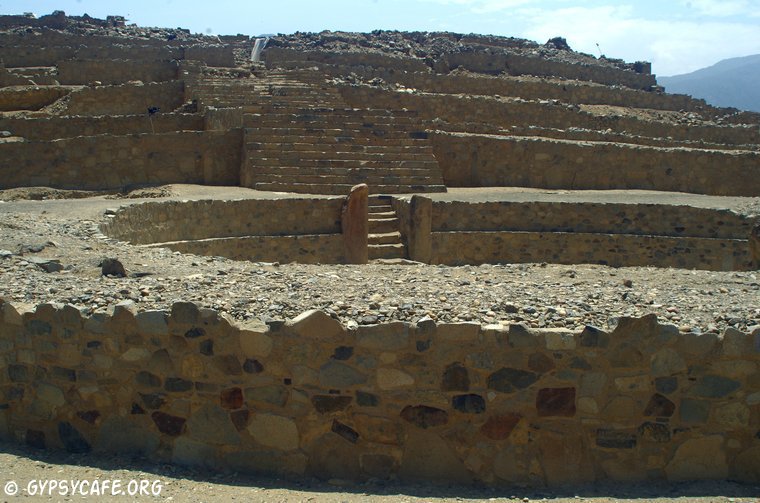

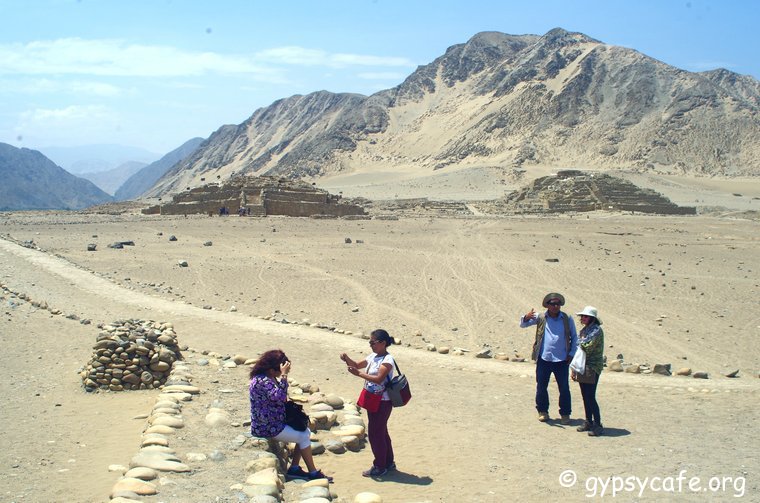
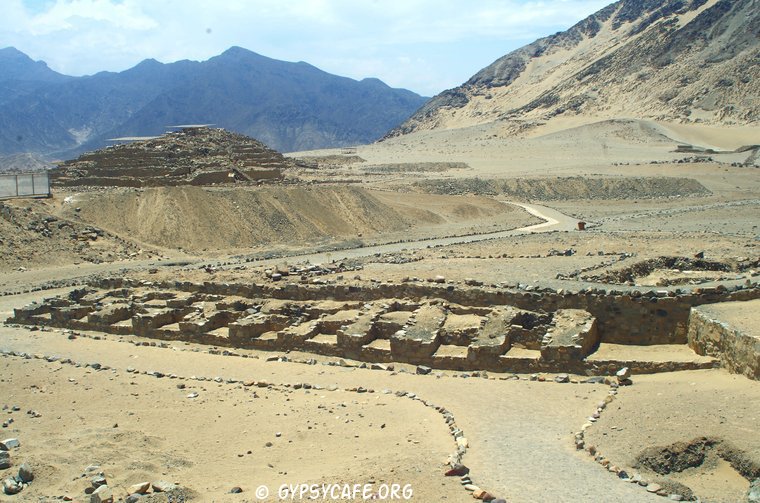

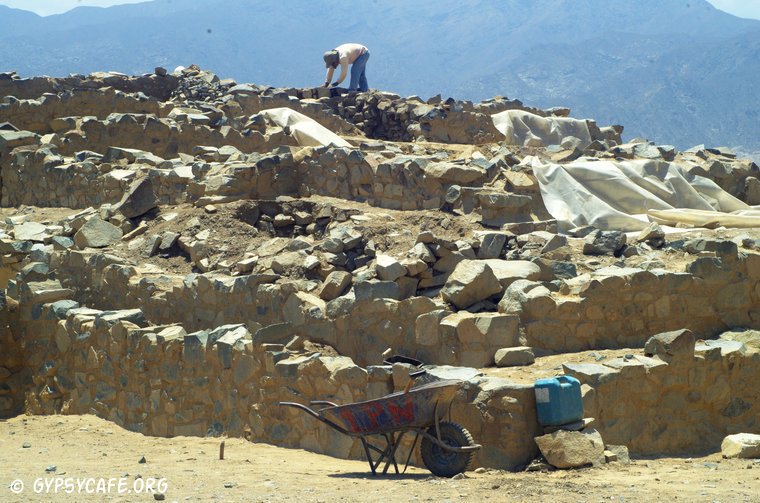
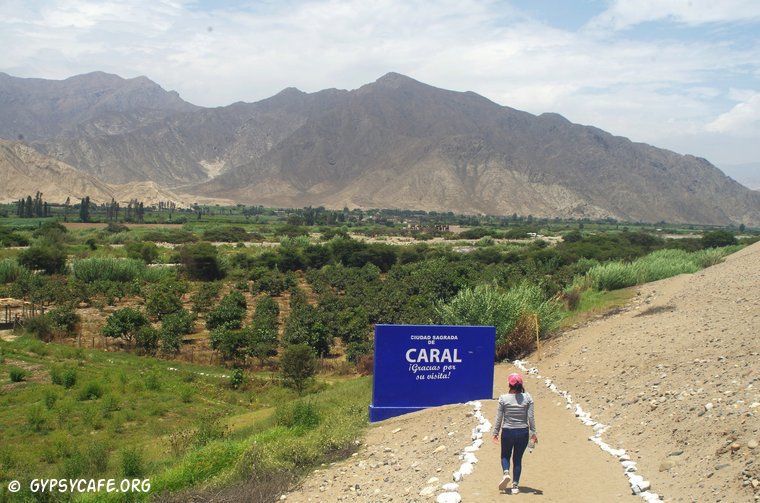


15 Comments
Thanks for this fascinating article and photos! I am encouraged to learn more about this place and am sharing your blog with people I know in Ecuador who may actually be able to visit!
You are most welcome, Marilyn! Caral is one of the most intriguing
places I have visited. I hope your acquaintances in Ecuador can
make it! Thanks for commenting.
Amazing story, Jacques! If Caral was the peaceful civilization that it seems to be, then this would completely undermine the common supposition that ancient peoples were more violent and barbaric than the modern “West.” The engineering prowess of Caral’s people is also astounding, and I’d love to visit one day.
Very well said, Josh! To me this is the most important aspect of the Caral civilisation. Now, let’s conisider the Yuga Cycle:
https://fiveseasonsmedicine.com/wp-content/uploads/2017/07/yuga-cycles-3.jpg
According to the Vedic Great Year (diagram above) the higher ages were peaceful.
Caral’s construction dates between 2,627 and 2,100 BC, so that would mean that it was constructed in the first half of the descending Dwapara Yuga – and… we are presently on the ascending arc of Dwapara Yuga, meaning that (as far-fetched as it may seem), a time of peace in the future – probably within the next 500 – 1000 years from now – is a real possibility. Food for thought, I’d say.
Of course a lot of water has to run into the sea and we may not experience such peace in our time, but knowing that peaceful civilisations existed in the distant past, within a specific time period and energy context – and that the cycles of time repeat, does infuse the present with some hope and aspiration towards a more enlightened future.
Additionally, the high level of development on all fronts, notwithstanding basic comforts in terms of mod-cons completely undermines the idea that ancient civilisations were primitive.
Thanks for your input, Josh!
JJ,
Fascinating discovery and article, but it raises more questions than it answers. First, I wonder how the archaeologists know what they claim. What caused Caral to collapse? I’m intrigued by the idea of a peaceful, self-sustaining civilization. I’ll be looking forward to hearing more about it.
Katherine, thanks for your comment. Indeed, much of such ancient civilisations remain a mystery – they existed so long ago that it’s very hard to know exactly what happened and how they lived. Archaeologists rely on carbon-dating (how accurate carbon-dating really is only experts in the field would know) and on literally and figuratively putting the pieces together from the artefacts, pieces of clothing, cultural items such as music instruments (flutes made from bone were excavated in Caral) and so on, in order to arrive at a picture of how the civilisation was.
In terms of collapse – all civilisations seem to have a timeline – they rise and they fall. If one considers the *Vedic Great Year then all advanced civilisations that were on the descending arc of evolution would have been prone to collapse – it would have been inevitable, because consciousness would have been diminishing over time, so it would have been very hard to maintain a civilisation under such circumstances.
*As discussed in Energy Shifts – Part 5:
http://gypsycafe.org/2018/07/14/the-yin-and-yang-of-growth-and-the-great-shift/
The interesting thing about Caral is that the idea of a self-sustaining civilisation was implemented by them on a practical level – it was not “rocket-science” for them, so why should it be such a challenge for us? Is it perhaps simply a matter of us not wanting to give up our comforts? Perhaps we can learn a think or two from the Caral civilisation.
Thank you Jacques – an awesome discovery, like a whole other era of being. It’s hard to imagine that such innovation was operating in such a time and place.
About the “rocket science” – it’s hard when the intention is to make the most money. The “rocket science” we can’t figure out is that when we do everything together for the good of the whole, Abundance will overflow for everyone, everywhere. I’m praying it’s as simple as One Divine thought that finally gets through. 🙂
Thanks for taking us on the journey.
in lak’ech, Debra
Good points about the profit imperative, Debra. It basically distracts from finding basic solutions in advance. It is challenging though, well impossible really to live without chasing money to a certain extent – we have to live and pay the bills. Once our focus on the material subsides and we start focusing more on the spiritual and on community, I believe solutions will start falling in place naturally. In the meantime I advocate for a ‘one-foot-in-one-foot-out’ approach. We can start working on supplementing and substituting through more organic ways, such as growing vegetables in our gardens, learning how to do permaculture, making use of renewable energy, cycling and walking more, driving less, and so on. If we already have one foot out when the time comes to make a complete transition, the transition will be easier.
Ancient civilisations such as Caral are fascinating because as you noted , look at all the technology they had! “The city’s infrastructure design also featured seismic resilience and underground air ducts which fuelled fires for heating and cooking” – so they had comforts, resilience and safety. Another interesting thing I read was that they did not seem to have stored food as they lived right next to a fertile valley, so food was always available even though the area in general was very dry.
I think the biggest problem the world will face is that the global population has grown so large, that it would be very difficult to support so many people through traditional methods – Caral apparently only had about 3000 inhabitants. Some low population countries will be able to do it, but the high population coutries with limited fertile land may have challenges. On a local level though I do think that many people will be able to find solutions as things get harder. Community leaders skilled in survival methods, permaculture, urban farming and basic living while maintaining some level of comfort will be in demand and will be needed to guide the way – spiritually and practically.
i’m happy to come along
on your discovery of what
was, could have been
but is now.
so much to contemplate.
in thousands of years
what will visitors to ruins
of our times be thinking? 🙂
The best question yet, David! What will visitors to our ruins think in the distant future, as opposed to what we think about the ancient sites of the past..? Would they consider us an advanced civilisation? The more I think about all of this the more I’m convinced that the Vedic Great Year cycle is real. In that context Caral was a higher civilisation than the one we have right now (in spite of all our technology.) Thank you for joining!
While visiting the more popular sites in Peru last year, I learned more about the ancient cultures of the northern coast. I’m excited about a future trip to that area. The Larco Museum in Lima contains many of the beautifully crafted artifacts left behind by the ancient peoples of the region. Thanks for sharing this!
Thanks for visiting, Henry. I became aware of the ancient archaeology sites in the northern parts of Peru when I visited the archaeology museum in Lima, sites such as Chavin (1500 – 500 BC), Chan Chan (900 – 1470 AD) and several others. Machu Piccu in the south has taken all the fame, but there’s really so much more! I hope you make it back soon as Peru definitely deserves several visits. Thanks for mentioning the Larco Museum – it looks like it’s one of the best ones in Lima – will try to go before I leave.
An incredible story ~ and such a mystery for me… and a new place I would like to go and contemplate… wonder about all the history this land has to offer. Wonderful post, and hopefully I’ll have dreams of Caral tonight 🙂
Hello Dalo, I much appreciate your comment. If you make it to Caral I can strongly recommend it, but it’s a place for people who are really interested in archaeology and ancient civilizations, it’s not a typical tourist spot. It’s a great place for reflection, so I hope you make it there one day. I’m glad my post inspired you and gave you a taste of being there.
I’m wishing you pleasant journeys!
J.J.